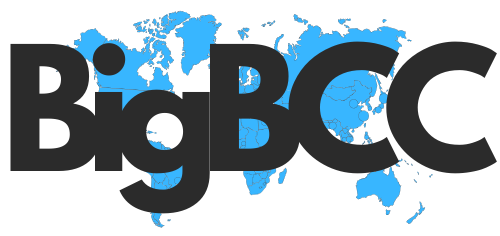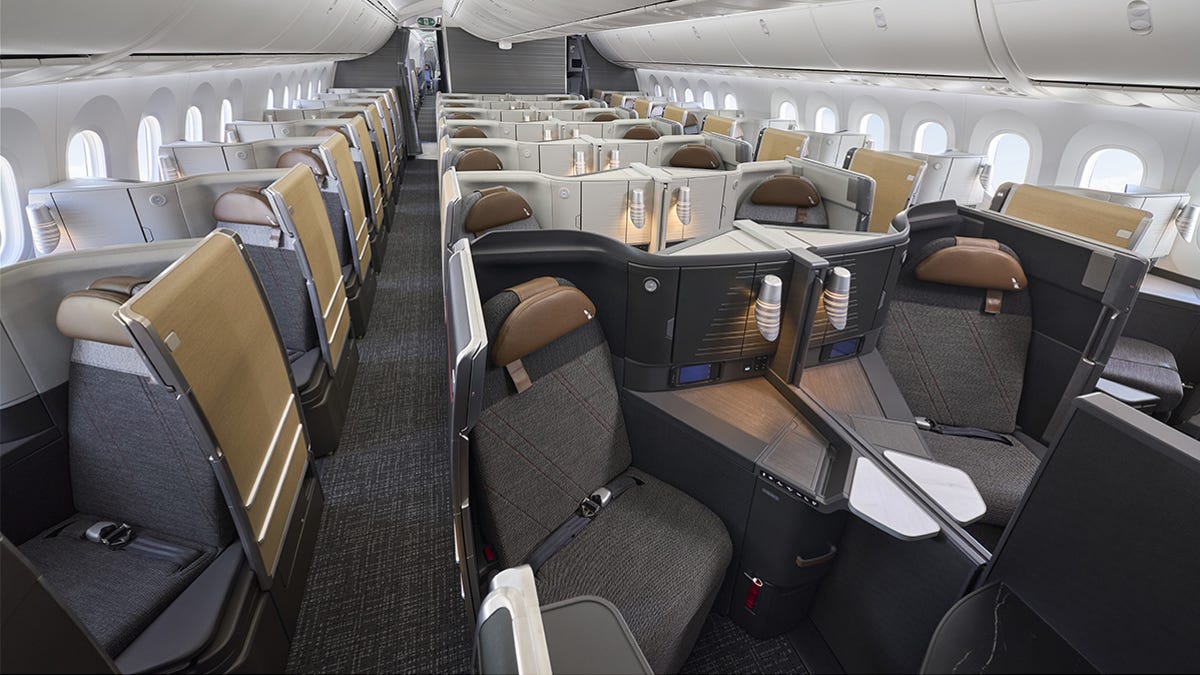What’s the difference between first and business class?
A quick guide to understanding the differences between premium economy, business class and first class at different airlines and on different routes.
- Airline cabin classes like premium economy, business, and first class can be confusing and vary significantly between domestic and international flights.
- On most U.S. domestic flights, “first class” refers to a large recliner-style seat, while on long-haul international flights, “business class” often features lie-flat beds.
- International premium economy typically offers a larger seat and better amenities than domestic premium economy, which is often just an economy seat with more legroom.
Don’t get tricked next time you pay for an airline upgrade, because you might not be getting what you expect. Here’s what I mean. I’m going to show you a few pictures and I want you to pick the one that’s first class. Is it:
A
B
C
or D?
Have you made your choice?
The correct answer is B. That’s domestic first class on a United Airlines Airbus A319, according to the picture’s metadata. If you thought it was D, that’s actually business class on a Delta Air Lines Boeing 777, which is no longer in service.
If you’re confused, that’s OK. Airline terminology is confusing, but here’s what you need to know about understanding the distinction between the classes of airline service, from economy and premium economy to business and first class.
“This is how I describe airline seating: Main cabin is your office chair, premium economy is a rocking chair. The flights with long-haul business are lie-flat, it’s a bed,” Loulu Lima, founder of the Texas-based travel agency Book Here Give Here, told USA TODAY. “For shorter distances, main cabin is still your office chair. Premium economy is a nicer office chair with a little bit of extra wiggle room, and your business/first class is your boss’ chair.”
Here’s how it breaks down if you’re struggling to visualize.
What is premium economy?
Premium economy essentially falls into two categories: domestic premium economy, which is usually the same as a regular economy seat with a little more legroom and maybe some extra amenities like better snacks or a free adult beverage.
On international flights, premium economy typically means a bigger, more plush seat with extra legroom and better service from meals to amenity kits.
Most airlines with a dedicated premium economy section on long-haul flights put fewer seats in every row, meaning you’ll have extra shoulder room as well as extra legroom in that cabin.
What is business class?
Here’s where things actually start to get confusing. On most U.S. airlines, business class is the most premium tier of service, because that’s the cabin where you’ll get fully-flat beds on long-haul flights.
American Airlines still flies a limited number of international and transcontinental routes with a dedicated first-class cabin, over and above their lie-flat business-class seats, but the airline plans to phase those out in the near future.
For most airline passengers in the U.S., American’s Flagship Business, Delta’s Delta One and United’s Polaris are the cream of the crop. Many international airlines, too, are doing away with separate first-class seating in favor of larger business-class cabins.
International business class typically has high-end amenities and multi-course meals to complement the luxurious seats.
Note that some non-U.S. airlines also market their more premium domestic cabins as business class, and depending on where you are in the world, that can mean anything from a larger international premium economy-style seat to a domestic premium economy-style seat with a bit more legroom and, possibly, a blocked middle seat in your row. Passenger experience can really vary in this category.
What is first class?
Once again, a somewhat confusing question to answer.
On most U.S. airlines, first class does not exist on international flights (again, with the exception of American’s soon-to-be-retired Flagship First on select Boeing 777s and Airbus A321s).
So, for most U.S. passengers, first class is only sold on domestic flights, and almost always means a large recliner-style seat, similar to what many airlines offer in international premium economy.
But if you’re flying an international airline on a long-haul flight, first class could be a step above business, with an even larger seat, an even fancier meal, and even more luxe amenities. Some Middle Eastern carriers really pull out all the stops with multi-room suites, including a shower, as their highest level of service.
“Business and first are interchangeable domestically. Internationally, it depends on the airline. The airlines that have a first, first usually means a mini New York City apartment,” Lima said.
How can I tell what premium options are on my flight?
Don’t worry if you’re still confused. There are resources out there to help you figure out what’s actually on sale for your future flights.
Websites like aeroLOPA show the layout of most planes in various airlines’ fleets, and can help less-familiar flyers parse what they’re actually paying for. Those seat maps are typically labeled with the branded names of each cabin, which can further help decode what’s being sold on each flight.
Lima said she often advises her clients to check social media and airline review sites for more information.
“I send them to a video platform to go take a look,” she said.
When is it worth it to buy the upgrade?
Once you figure out what’s actually being offered, it can be easier to decide if it’s worth the upcharge for your trip.
Lima said she usually talks with her clients about what they need to feel comfortable on their flight and how it fits into their budget.
“I try to make them feel comfortable and go, this is what I need when I travel, how do you feel?” she said. “And then I go, well, what’s your budget? Because what you feel and what your budget is sometimes are two different things.”
Zach Wichter is a travel reporter and writes the Cruising Altitude column for USA TODAY. He is based in New York and you can reach him at zwichter@usatoday.com.









